Daggerwing is also home to the Cassius Blue (Leptotes cassius), a tropical butterfly at the northern end of its normal range.
Besides butterflies, Daggerwing is a good place for dragonflies - in this case, a Great Pondhawk (Erythemis vesiculosa).
Most of my excursions, though - especially if Eileen and Ryan were with me - were to the more extensive wetlands at Wakodahatchee and (as here) Green Cay, both just north of Boca Raton in Delray. I have featured these reserves, and their wildlife, many times here before, but there is always something new to see (both areas can swarm with wildlife photographers who must photograph the same animals countless times, so a bit of repetition on my part is surely a minor peccadillo).
As at Daggerwing, these can be good places for dragonflies. Here is one I don't see too often, a male Roseate Skimmer (Orthemis ferruginea) - like the Cassius Blue, a tropical species near the northern edge of its range.
The small stands of trees in the reserves can be strung with the webs of the Spiny-backed Orbweaver (Gasteracantha cancriformis), a colourful and highly variable little spider (and one that it is difficult, at least in South Florida, to mistake for anything else).
For many of the numerous visitors to Green Cay or Wakodahatchee, the biggest thrill is spotting an American Alligator (Alligator mississippiensis) - not, usually, a difficult task.
I am more interested in turtles, having once committed a book on the subject. One that I found hard to find for some years, but that appears to be increasingly common now in both reserves, is the Peninsula Cooter (Pseudemys peninsularis).
The easiest way to tell this turtle from the much commoner Florida Red-bellied Turtle (Pseudemys nelsoni) is by looking for the paired yellow "hairpin" lines on the top of its head.
The chief glory of these reserves, though, is surely their birdlife, the target of many an expert or beginning birder (in this case, Ryan, actually in Mom's back garden).
In recent years the birds at both places have been dominated by an influx of breeding Wood Storks (Mycteria americana).
At times, these days, there seem to be storks on almost every tree.
This one is sharing a perch with a Red-shouldered Hawk (Buteo lineatus).
The most spectacular bird in the area, though, remains the Roseate Spoonbill (Platalea ajaja). Spoonbills tend to prefer brackish water, and they are not always present at these two freshwater reserves.
When they are around, though, they draw everyone's eye.
At the other end of the water bird size scale from the Wood Stork is the Sora (Porzana carolinensis), a little crake that is probably common in the marshes but, because of its shy behaviour, can be difficult to see.
The little Palm Warbler (Setophaga palmarum) is a nearly ubiquitous winter visitor.
Larger visitors include a few hawks. The Broad-winged Hawk (Buteo platypterus) is a common migrant and winter visitor in Florida.
One some winter days you can find a Northern Harrier (Circus cyaneus) coursing back and forth over the marshes.
Herons are everywhere, from the delicately graceful Snowy Egret (Egretta thula)...
...to the Great Blue Heron (Ardea herodias), here gathering twigs to add to its massive nest.
The Tricoloured Heron (Egretta tricolor) may be the most numerous of the herons in the area.
Green Herons (Butorides virescens) are a bit harder to spot, but will pose quite nicely once they are found.
For some reason I have trouble getting a shot of a Glossy Ibis (Plegadis falcinellus) without a lot of vegetation in the way, so I am quite happy with this photo.
This bird has, rather surprisingly, retained its breeding colour into December - for once, showing why the bird is called the Pied-billed Grebe.







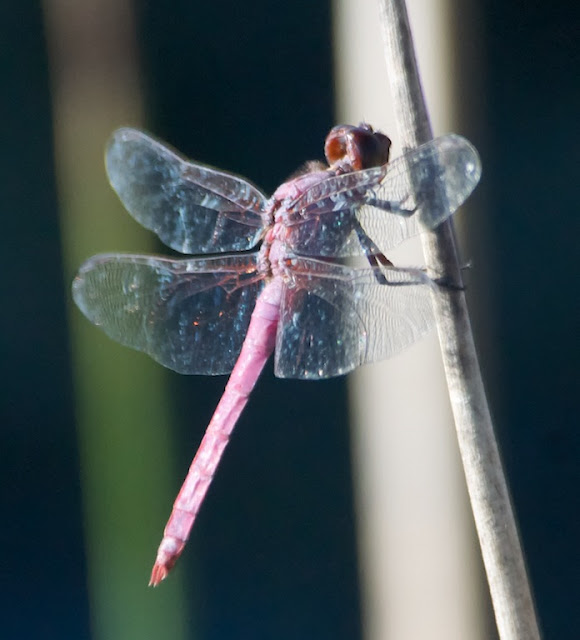



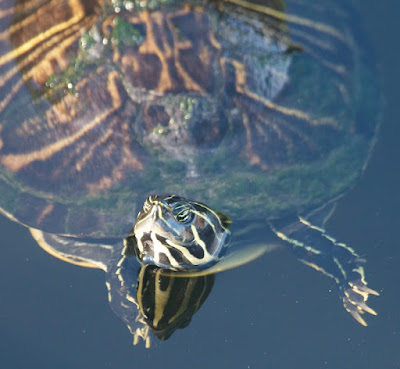



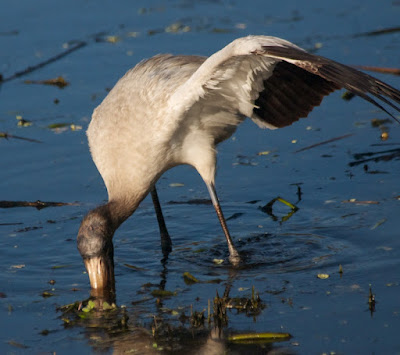
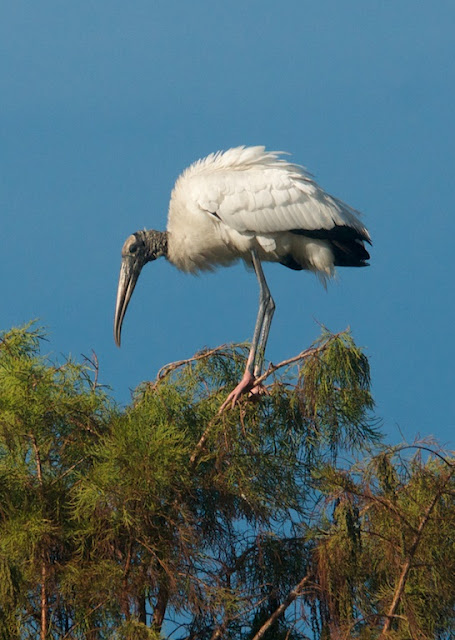










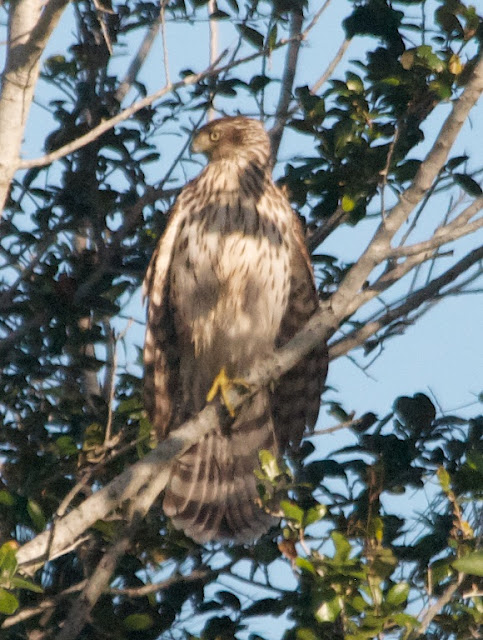






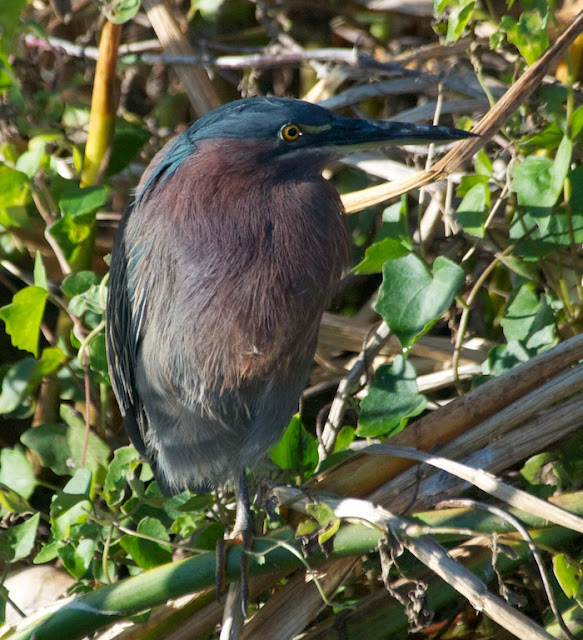







No comments:
Post a Comment